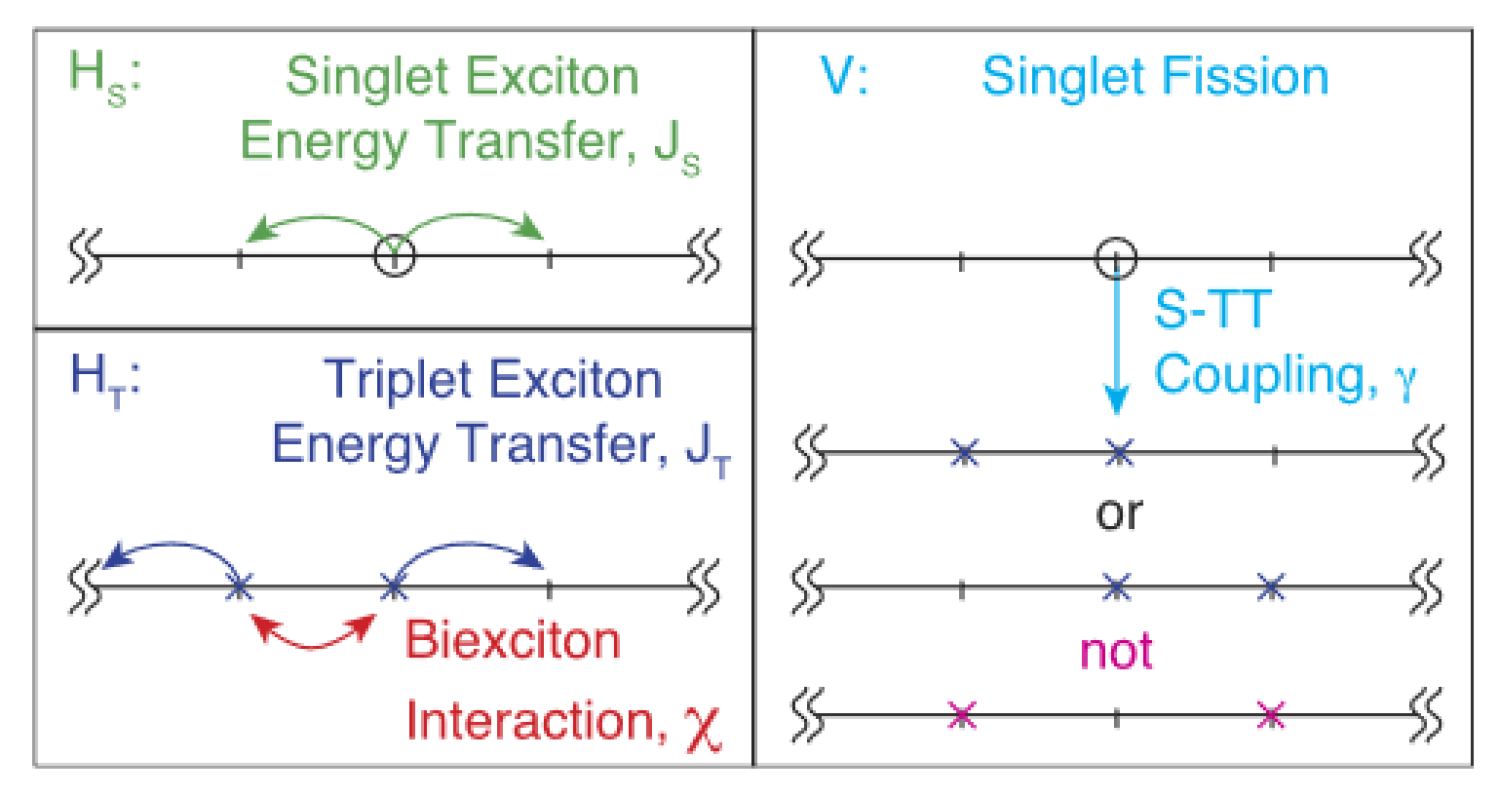Collective aspects of singlet fission in molecular crystals

We present a model to describe collective features of singlet fission in molecular crystals and analyze it using many-body theory. The model we develop allows excitonic states to delocalize over several chromophores which is consistent with the character of the excited states in many molecular crystals, such as the acenes, where singlet fission occurs. As singlet states become more delocalized and triplet states more localized, the rate of singlet fission increases. We also determine the conditions under which the two triplets resulting from fission are correlated. Using the Bethe Ansatz and an entanglement measure for indistinguishable bipartite systems, we calculate the triplet-triplet entanglement as a function of the biexciton interaction strength. The biexciton interaction can produce bound biexciton states and provides a source of entanglement between the two triplets even when the triplets are spatially well separated. Significant entanglement between the triplet pair occurs well below the threshold for bound pair formation. Our results paint a dynamical picture that helps to explain why fission has been observed to be more efficient in molecular crystals than in their covalent dimer analogues and have consequences for photovoltaic efficiency models that assume that the two triplets can be extracted independently.
Teichen, P. E. and Eaves, J. D., Collective aspects of singlet fission in molecular crystals. J. Chem. Phys. 143, 044118 (2015)

